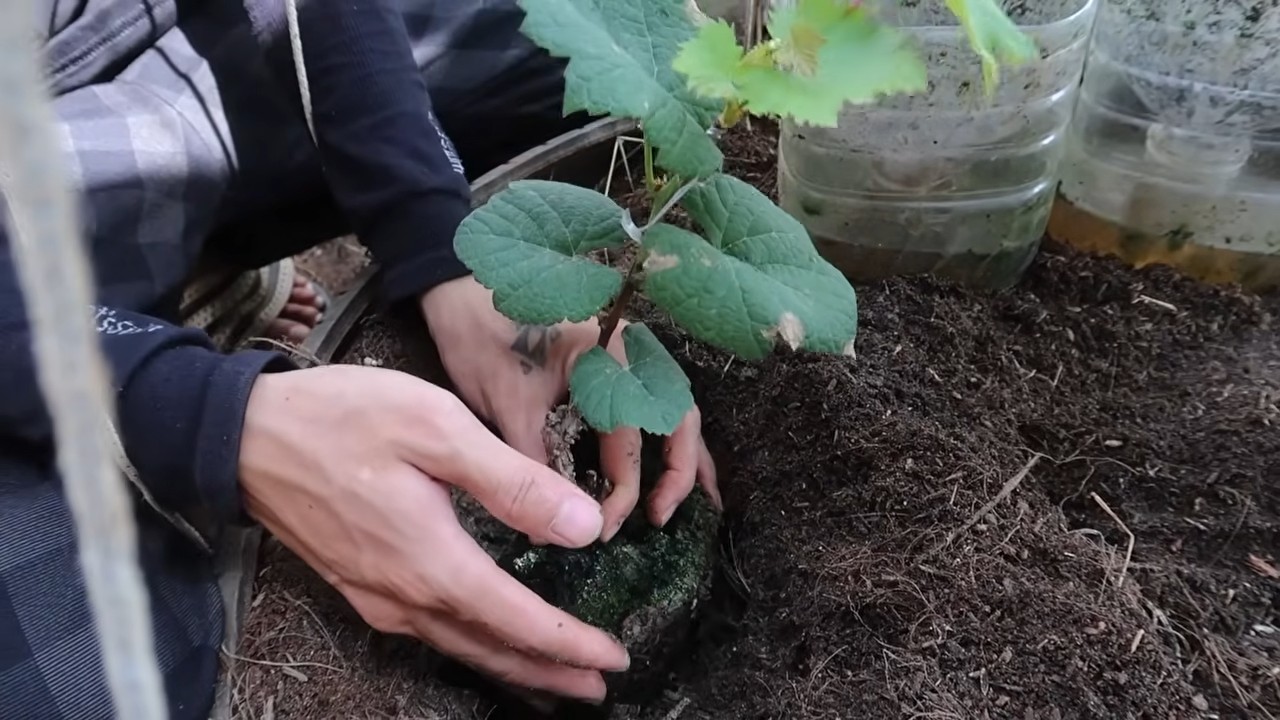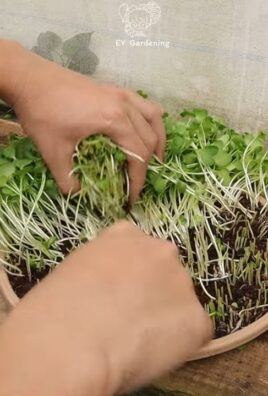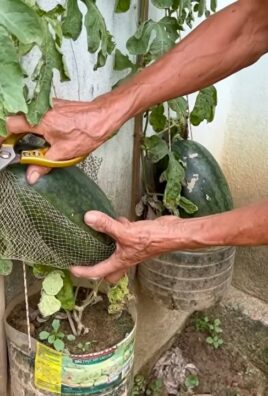Grow grapes in your backyard? Absolutely! Imagine stepping outside your back door and plucking juicy, sun-ripened grapes straight from the vine. Sounds like a dream, right? Well, it doesn’t have to be! This DIY guide is your passport to creating your very own miniature vineyard, even if you’re a complete beginner. Forget those expensive grocery store grapes – we’re about to unlock the secrets to cultivating your own delicious harvest.
Grape cultivation has a rich history, dating back thousands of years. From ancient Egypt to the Roman Empire, grapes have been prized for their flavor and their role in winemaking. While we might not all be aspiring vintners, the satisfaction of growing your own food, especially something as rewarding as grapes, is incredibly fulfilling. Plus, think of the bragging rights!
But why should you bother learning how to grow grapes in your backyard? Well, beyond the obvious deliciousness, growing your own grapes is a fantastic way to connect with nature, reduce your carbon footprint, and save money. Store-bought grapes can be pricey, and you never quite know where they’ve come from or what they’ve been sprayed with. By growing your own, you control the entire process, ensuring you have access to fresh, healthy, and organically grown fruit. So, let’s dive in and discover the simple steps to transforming your backyard into a grape-growing paradise!

Weinreben im eigenen Garten ziehen: Dein DIY-Leitfaden für eine reiche Ernte
Ich liebe es, frische, saftige Trauben direkt aus dem eigenen Garten zu pflücken! Es ist nicht nur unglaublich befriedigend, sondern auch viel einfacher, als man vielleicht denkt. Mit ein wenig Planung und Geduld kannst auch du bald deine eigenen Weinreben hegen und pflegen. Hier ist mein umfassender Leitfaden, der dir Schritt für Schritt zeigt, wie du das machst.
Die Grundlagen: Was du vor dem Pflanzen wissen musst
Bevor wir loslegen, ist es wichtig, ein paar grundlegende Dinge zu klären. Weinreben sind relativ pflegeleicht, aber sie haben bestimmte Bedürfnisse, die du erfüllen musst, um eine erfolgreiche Ernte zu erzielen.
* Standort: Weinreben lieben die Sonne! Wähle einen Standort, der mindestens 6-8 Stunden direkte Sonneneinstrahlung pro Tag erhält. Ein nach Süden ausgerichteter Hang ist ideal, da er die Sonnenwärme optimal nutzt.
* Boden: Der Boden sollte gut durchlässig sein. Staunässe ist der Feind der Weinreben. Ein leicht sandiger Lehmboden ist perfekt. Wenn dein Boden sehr lehmig ist, kannst du ihn mit Sand und organischem Material verbessern.
* Klima: Nicht alle Rebsorten sind für jedes Klima geeignet. Informiere dich, welche Sorten in deiner Region gut gedeihen. Achte auf die Winterhärte und die Länge der Vegetationsperiode.
* Unterstützung: Weinreben sind Kletterpflanzen und benötigen eine stabile Unterstützung, wie z.B. ein Spalier, eine Pergola oder einen Zaun. Plane die Unterstützung von Anfang an mit ein.
* Sortenwahl: Das ist der spaßige Teil! Es gibt unzählige Rebsorten, jede mit ihrem eigenen Geschmack und Verwendungszweck. Überlege dir, ob du Tafeltrauben (zum direkten Verzehr), Keltertrauben (zur Weinherstellung) oder beides anbauen möchtest. Beliebte Tafeltraubensorten sind ‘Venus’, ‘Himrod’ und ‘Reliance’. Für die Weinherstellung sind ‘Riesling’, ‘Pinot Noir’ und ‘Chardonnay’ bekannte Optionen.
Schritt-für-Schritt-Anleitung zum Pflanzen deiner Weinreben
Jetzt geht’s ans Eingemachte! Hier ist eine detaillierte Anleitung, wie du deine Weinreben pflanzt:
1. Den richtigen Zeitpunkt wählen: Der beste Zeitpunkt zum Pflanzen von Weinreben ist im Frühjahr (nach dem letzten Frost) oder im Herbst (vor dem ersten Frost). So haben die Pflanzen genügend Zeit, sich vor den extremen Temperaturen zu etablieren.
2. Den Boden vorbereiten: Grabe ein Loch, das doppelt so breit und tief ist wie der Wurzelballen der Rebe. Lockere den Boden am Boden des Lochs auf, um die Drainage zu verbessern. Mische etwas Kompost oder gut verrotteten Mist in den Aushub, um den Boden mit Nährstoffen anzureichern.
3. Die Rebe pflanzen: Nimm die Rebe vorsichtig aus dem Topf und lockere die Wurzeln etwas auf. Setze die Rebe in das Loch, so dass die Oberseite des Wurzelballens auf gleicher Höhe mit der Bodenoberfläche ist. Fülle das Loch mit dem vorbereiteten Aushub auf und drücke die Erde leicht an.
4. Gießen: Gieße die Rebe nach dem Pflanzen gründlich. Das hilft, die Erde zu setzen und die Wurzeln zu befeuchten.
5. Mulchen: Trage eine Schicht Mulch (z.B. Holzhackschnitzel oder Stroh) um die Rebe auf. Das hilft, die Feuchtigkeit im Boden zu halten, Unkraut zu unterdrücken und den Boden zu isolieren. Achte darauf, dass der Mulch nicht direkt am Stamm der Rebe anliegt, um Fäulnis zu vermeiden.
6. Anbinden: Binde die Rebe an die vorbereitete Unterstützung (Spalier, Pergola, Zaun) an. Verwende dafür weiche Schnüre oder Pflanzenbinder, um den Stamm nicht zu beschädigen.
Die ersten Jahre: Pflege und Erziehung der jungen Reben
Die ersten Jahre sind entscheidend für die Entwicklung starker und gesunder Weinreben. Hier sind einige wichtige Pflegemaßnahmen:
* Gießen: Gieße die Reben regelmäßig, besonders in trockenen Perioden. Achte darauf, dass der Boden feucht, aber nicht nass ist.
* Düngen: Dünge die Reben im Frühjahr mit einem ausgewogenen Dünger. Befolge die Anweisungen auf der Verpackung. Vermeide eine Überdüngung, da dies zu übermäßigem Wachstum und weniger Früchten führen kann.
* Schneiden: Der Schnitt ist ein wichtiger Bestandteil der Rebenpflege. Er hilft, die Form der Rebe zu bestimmen, die Fruchtbildung zu fördern und die Luftzirkulation zu verbessern. Im ersten Jahr solltest du die Rebe auf einen einzigen Trieb reduzieren. In den folgenden Jahren kannst du die Rebe nach Bedarf schneiden, um die gewünschte Form zu erhalten. Informiere dich über die spezifischen Schnitttechniken für deine Rebsorte.
* Schutz vor Schädlingen und Krankheiten: Weinreben können von verschiedenen Schädlingen und Krankheiten befallen werden. Kontrolliere die Reben regelmäßig auf Anzeichen von Befall und ergreife bei Bedarf Maßnahmen. Es gibt viele biologische und chemische Mittel zur Bekämpfung von Schädlingen und Krankheiten. Sprich am besten mit einem Fachmann, um die richtige Behandlung für deine Reben zu finden.
* Unkrautbekämpfung: Halte den Bereich um die Reben frei von Unkraut. Unkraut konkurriert mit den Reben um Wasser und Nährstoffe. Du kannst Unkraut manuell entfernen oder Herbizide verwenden. Achte darauf, die Reben nicht zu beschädigen, wenn du Herbizide verwendest.
Die Ernte: Der Lohn deiner Mühe
Nach einigen Jahren harter Arbeit ist es endlich soweit: Die Ernte! Der Zeitpunkt der Ernte hängt von der Rebsorte und dem Klima ab. Tafeltrauben sind in der Regel reif, wenn sie ihre volle Farbe erreicht haben und leicht vom Stiel zu lösen sind. Keltertrauben werden in der Regel etwas später geerntet, wenn sie den gewünschten Zuckergehalt erreicht haben.
* Den richtigen Zeitpunkt erkennen: Probiere die Trauben! Sie sollten süß und saftig sein.
* Ernten: Schneide die Trauben mit einer scharfen Schere oder einem Messer ab. Achte darauf, die Beeren nicht zu beschädigen.
* Genießen: Genieße deine selbst angebauten Trauben! Du kannst sie direkt essen, zu Saft verarbeiten, zu Wein keltern oder zu Marmelade verarbeiten.
Zusätzliche Tipps für eine erfolgreiche Weinrebenzucht
Hier sind noch ein paar zusätzliche Tipps, die dir helfen können, deine Weinreben erfolgreich anzubauen:
* Bodenanalyse: Eine Bodenanalyse kann dir helfen, den pH-Wert und den Nährstoffgehalt deines Bodens zu bestimmen. So kannst du den Boden gezielt verbessern und die Reben optimal versorgen.
* Bewässerungssystem: Ein Bewässerungssystem (z.B. Tropfbewässerung) kann dir helfen, die Reben gleichmäßig mit Wasser zu versorgen. Das ist besonders in trockenen Perioden wichtig.
* Winterschutz: In kalten Regionen kann es notwendig sein, die Reben im Winter vor Frost zu schützen. Du kannst die Reben mit Vlies abdecken oder sie in den Boden einwickeln.
* Geduld: Weinreben brauchen Zeit, um zu wachsen und Früchte zu tragen. Sei geduldig und gib nicht auf, wenn es nicht sofort klappt. Mit der richtigen Pflege und etwas Glück wirst du bald deine eigenen Trauben ernten können.
Ich hoffe, dieser Leitfaden hat dir geholfen, deine eigenen Weinreben anzubauen. Es ist ein lohnendes Hobby, das dir viele Jahre Freude bereiten wird. Viel Erfolg!

Conclusion
So, there you have it! Growing grapes in your backyard might seem daunting at first, but with a little planning, patience, and the right techniques, you can transform your outdoor space into a personal vineyard. The satisfaction of harvesting your own juicy, sun-ripened grapes is an experience unlike any other. Forget the supermarket varieties; imagine the intense flavor and sweetness of grapes you nurtured from vine to table.
This isn’t just about saving money (although that’s a definite perk!). It’s about connecting with nature, understanding the growing process, and enjoying the fruits (literally!) of your labor. Plus, think of the bragging rights! “Oh, these grapes? I grew them myself.” It’s a conversation starter and a source of immense pride.
But the real reason this DIY trick is a must-try is the sheer versatility it unlocks. You’re not just limited to eating them fresh off the vine. Imagine crafting your own homemade grape juice, creating delectable grape jams and jellies, or even venturing into the world of winemaking. The possibilities are truly endless.
Ready to take your grape-growing game to the next level? Consider experimenting with different grape varieties to find the ones that thrive best in your specific climate and soil conditions. Some popular choices include Concord (perfect for juice and jelly), Thompson Seedless (a classic table grape), and Cabernet Sauvignon (if you’re feeling ambitious and want to try your hand at winemaking).
Don’t be afraid to get creative with your trellis system. While a traditional wire trellis works well, you could also explore more decorative options like an arbor or pergola. This not only provides support for your vines but also adds a beautiful architectural element to your backyard.
And remember, growing grapes in your backyard is a journey, not a destination. There will be challenges along the way, but don’t let that discourage you. Embrace the learning process, celebrate your successes, and most importantly, have fun!
We’re confident that with the information provided, you’re well-equipped to embark on this exciting adventure. So, grab your gardening gloves, choose your grape variety, and get ready to experience the joy of growing your own grapes.
We’d love to hear about your experiences! Share your photos, tips, and challenges in the comments below. Let’s create a community of backyard grape growers and learn from each other. Happy growing!
Frequently Asked Questions (FAQ)
What is the best time of year to plant grape vines?
The best time to plant grape vines is typically in early spring, after the last frost has passed. This gives the vines ample time to establish their root systems before the heat of summer arrives. However, you can also plant in late fall, provided you protect the young vines from harsh winter conditions. When planting in the fall, make sure to mulch heavily around the base of the vines to insulate the roots and prevent them from freezing. The key is to avoid planting during periods of extreme heat or cold.
What kind of soil is best for growing grapes?
Grapes thrive in well-drained soil that is slightly acidic to neutral (pH 6.0-7.0). The soil should be rich in organic matter and have good drainage to prevent root rot. Before planting, it’s a good idea to conduct a soil test to determine the pH level and nutrient content. If your soil is too alkaline, you can amend it with sulfur. If it’s lacking in organic matter, you can add compost or well-rotted manure. Avoid heavy clay soils, as they tend to retain too much water. If you have clay soil, you can improve its drainage by adding sand and organic matter.
How much sunlight do grape vines need?
Grape vines require at least 6-8 hours of direct sunlight per day to produce a good crop of grapes. Choose a planting location that receives plenty of sunlight throughout the day. If your vines are shaded for a significant portion of the day, they will produce fewer grapes and the grapes that they do produce will be less sweet.
How often should I water my grape vines?
Water grape vines deeply but infrequently, especially during dry periods. Young vines need more frequent watering than established vines. Water deeply at the base of the vine, avoiding wetting the foliage, which can promote fungal diseases. As the grapes begin to ripen, reduce watering to prevent the grapes from splitting. A good rule of thumb is to water when the top inch of soil feels dry to the touch.
How do I prune grape vines?
Pruning is essential for maintaining the health and productivity of grape vines. The best time to prune is in late winter or early spring, before the buds begin to swell. Remove any dead, damaged, or diseased wood. Also, remove any suckers that are growing from the base of the vine. The goal of pruning is to encourage the growth of fruiting wood while maintaining the overall shape and structure of the vine. There are different pruning methods depending on the grape variety and the trellis system you are using. Consult a local expert or a reliable gardening guide for specific pruning instructions.
What are some common pests and diseases that affect grape vines?
Grape vines are susceptible to a variety of pests and diseases, including aphids, Japanese beetles, powdery mildew, and black rot. Regularly inspect your vines for signs of infestation or disease. If you notice any problems, take action immediately to prevent them from spreading. You can use organic pesticides and fungicides to control pests and diseases. Good air circulation and proper pruning can also help to prevent fungal diseases.
How long does it take for grape vines to produce fruit?
It typically takes 2-3 years for grape vines to produce a significant crop of grapes. The first year, the vines will focus on establishing their root systems. The second year, they may produce a small number of grapes. By the third year, you should be able to harvest a more substantial crop. Be patient and continue to care for your vines, and you will be rewarded with delicious, homegrown grapes.
Can I grow grapes in containers?
Yes, you can grow grapes in containers, but you will need to choose a dwarf or compact variety that is suitable for container growing. Use a large container with good drainage and fill it with a well-draining potting mix. Container-grown grapes will need more frequent watering and fertilization than grapes grown in the ground. Also, you may need to provide support for the vines, such as a trellis or stake.
What are some good grape varieties for beginners?
Some good grape varieties for beginners include Concord, Niagara, and Thompson Seedless. These varieties are relatively easy to grow and are known for their disease resistance. They are also widely available at nurseries and garden centers. Do some research to determine which varieties are best suited for your climate and growing conditions.
How do I know when my grapes are ripe?
The best way to determine if your grapes are ripe is to taste them. Ripe grapes will be sweet and juicy, with a slightly soft texture. The color of the grapes will also change as they ripen. For example, green grapes will turn yellow or golden, and red grapes will turn a deeper shade of red. You can also check the sugar content of the grapes using a refractometer. A refractometer measures the amount of sugar in the grape juice, which can help you determine when the grapes are at their peak ripeness.





Leave a Comment